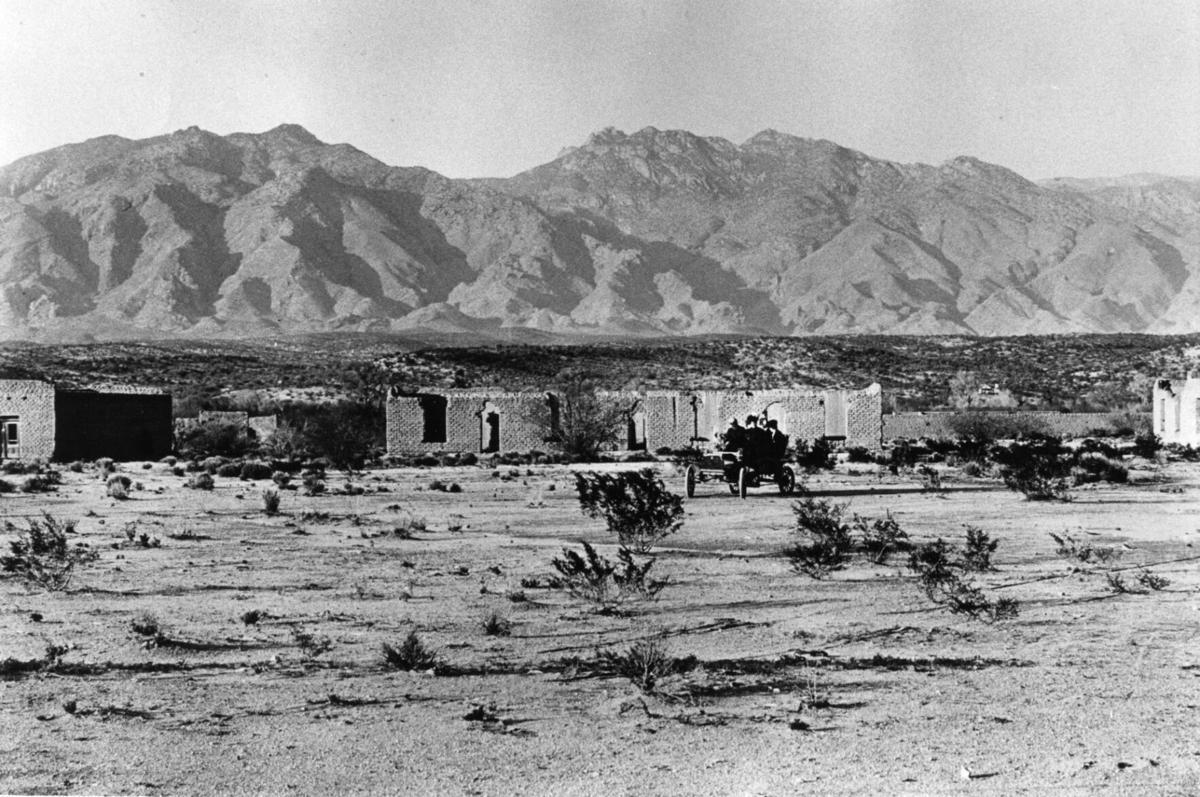TUCSON, Ariz. (KGUN) — In the heart of Tucson's eastside, near Craycroft Road and Glenn St, you will find Fort Lowell Park.
Amid a popular duck pond, a pool, a splash pad, and ball fields, sit the adobe ruins of Fort Lowell.
"That 18 years that the Army was here is really just a small blip," said Fort Lowell Museum volunteer Jeff Coleman.
Coleman is referring to the 18 years the Army called Fort Lowell home. But the history of the area goes back much further than the late 1800s.
Centuries earlier, the Hohokam settled the land near the confluence of the Pantano and Tanque Verde washes, where it forms the Rillito River. Back then, it was a steady source of water.
"It's all about water," Coleman said. "Living in the desert of course, and that's why they were along the streams."
"At one point a pretty consistent source of water," explained Fort Lowell Museum Community Engagement and Education Manager Ginger Thompson. "It was really fertile for farming, which is another reason why they built the fort here also."
They also built the fort here because the Army had worn out its welcome in downtown Tucson.
In the 1860s, the Army established a post in what is now Armory Park. It was named Camp Lowell after a Union Army General, Charles Russell Lowell, killed during the Civil War.
By 1873, people living in Tucson had grown tired of the rowdy soldiers.
"There were some conflicts with having the soldiers so close to the town," said Coleman. "The Army said 'Hey let's get them 'em out of here, let's put 'em somewhere else.'"
The soldiers packed up their tents and equipment and moved seven miles outside of Tucson, establishing a new location for Camp Lowell. The camp was renamed Fort Lowell in 1879.

By then, the fort had adobe buildings around a parade ground.
Fort Lowell was a duty post for hundreds of cavalry and infantry, as they protected the area from Apache raiders. But when Geronimo surrendered in 1886, Fort Lowell was no longer needed by the Army.
"So, in 1891 they closed the post over a lot of objections from the town," Coleman said.

For a time, the old post became farmland, then an artist colony.
By 1912, the Boy Scouts began camping near the ruins of the fort.
According to historian David Leighton's research, the scouts were actually the first to preserve some of the adobe ruins. They constructed a metal roof over the ruins of the Fort Lowell Hospital.

Today, Fort Lowell Park is a spot for recreation and for preservation.
You can learn more about the 18 years of the fort, inside the recently renovated Fort Lowell Museum. It is now managed by the Tucson Presidio Trust.
"It's just preserving Tucson's history," said Fort Lowell Museum Director of Interpretive Programs, Kate Avalos.
Avalos is in charge of the hands-on displays at both the Presidio downtown and at the Fort Lowell Museum.
It's located inside the rebuilt commanding officer's house.
"The military was very key in Tucson developing," recalled Avalos. "You don't want to forget that the U.S. Military brought stuff here like the telegraph."

You'll find a working telegraph at the museum. It is the same model used at Fort Lowell.
But the living history of Fort Lowell also needs to be experienced by going outside the museum.
Nearby, you'll see the hospital ruins.
Across Craycroft, you'll find three of the original seven officers' quarters buildings.
And if you head to the east side of the park you will find a Hohokam site, helping to preserve the origins of this area.

"That's every bit as important again, as that 18 years that this was an active military post," said Coleman.
The Fort Lowell Museum is open each week Wednesday through Sunday from 10 a.m. to 3 p.m.
——-
Pat Parris is an anchor and reporter for KGUN 9. He is a graduate of Sabino High School where he was the 1982 high school state track champion in the 800 meters. While in high school and college, he worked part-time in the KGUN 9 newsroom. Share your story ideas and important issues with Pat by emailing pat.parris@kgun9.com or by connecting on Facebook, Twitter, and Instagram.





